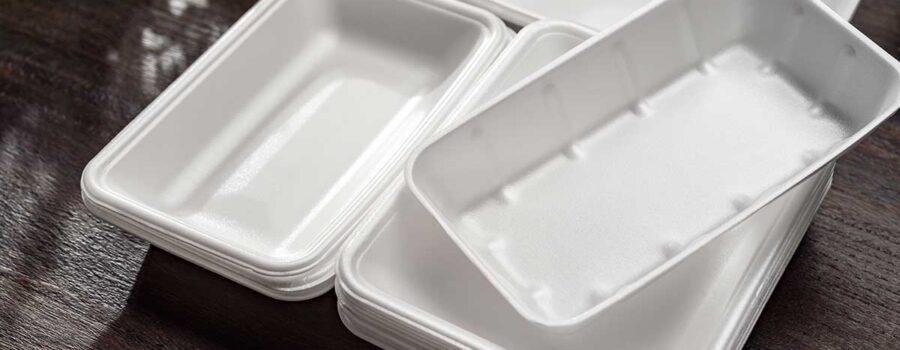Styrofoam plates and cups are common staples at gatherings, but they’re far from safe for your health. Made from polystyrene, Styrofoam contains a compound called styrene, which has been associated with a variety of health risks. When food is served on Styrofoam, especially hot food, the risk of chemicals leaching into your meal increases, exposing you to toxins. For anyone looking to embrace a non-toxic lifestyle, switching away from Styrofoam is crucial to protecting overall wellness.[1]
What Exactly is Styrene, and Why Should You Avoid It?
Styrene is a chemical compound used to manufacture polystyrene, which makes up Styrofoam. This compound has been linked to several health concerns:
- Hormonal Disruption: Styrene is known as an endocrine disruptor, meaning it can interfere with hormone balance, potentially leading to issues with metabolism, mood regulation, and reproductive health.
- Neurological Effects: Exposure to styrene has been associated with impaired neurological function, including cognitive decline, memory problems, and reduced focus. Since this compound can leach into food, regularly eating from Styrofoam may increase the risk of long-term effects on brain health.
- Increased Risk of Toxic Exposure to Heat: Styrofoam is particularly problematic when exposed to heat, as high temperatures speed up the release of styrene and other chemicals into food. Heating food in Styrofoam or even serving hot food on it can cause significant leaching, increasing your exposure.
Why Styrofoam Plates and Cups Pose the Same Risks
Like Styrofoam plates leach toxins into food, Styrofoam cups do the same with hot beverages. Pouring coffee or tea into a Styrofoam cup can create what some call a “styrene cocktail,” as the high temperatures trigger the leaching process. Even a few minutes of exposure to a hot drink can introduce harmful chemicals into your system, putting you at risk of hormone-related health issues and neurological decline.[2]
Safer Alternatives to Styrofoam Plates for a Non-Toxic Lifestyle
The good news is that plenty of safer alternatives are available for everyday meals and special occasions, allowing you to avoid Styrofoam entirely. Here’s a closer look at the best options for minimizing toxic exposure from dishware:
- Glass Plates and Bowls: Glass is a non-reactive material that doesn’t leach chemicals, even at high temperatures. Using glass plates for both hot and cold foods ensures a toxin-free dining experience, making them an ideal choice for those committed to non-toxic living. Plus, glass is durable, easy to clean, and safe for everyday use and larger gatherings.
- Stainless Steel Plates and Cups: Stainless steel is an excellent, non-toxic alternative to Styrofoam, especially for outdoor gatherings or picnics. It’s lightweight, shatter-resistant, and safe for hot and cold items, ensuring no harmful chemicals enter your food or drinks. Stainless steel lasts for years, making it a practical choice for families and anyone looking to reduce disposable waste.
- Paper Plates: While not as durable or long-lasting as glass or stainless steel, paper plates are better than Styrofoam. Look for uncoated or compostable varieties to avoid chemicals that some coated paper products might contain. Though they’re single-use, paper plates are generally safer for occasional use when you need convenience without the toxic risks of Styrofoam.
- Bamboo or Palm Leaf Plates: Bamboo and palm leaf plates are becoming popular as disposable, non-toxic options that handle hot and cold foods. Made from natural materials, these plates are free from harmful chemicals and don’t leach toxins, offering a safer alternative for those who prefer single-use items at large gatherings or events.
Understanding the Long-Term Impact of Styrene on Health
Switching away from Styrofoam isn’t just about a single meal; it’s about reducing your cumulative exposure to styrene over time. Health issues like hormonal imbalances, reproductive challenges, and cognitive decline can develop gradually, and minimizing exposure to known toxins like styrene is an essential step in supporting long-term wellness. By consistently choosing non-toxic alternatives, you’re investing in a lifestyle prioritizing your health.
Tips for a Non-Toxic Lifestyle Beyond Styrofoam Plates and Cups
Avoiding Styrofoam is one step toward a non-toxic lifestyle, but there are other areas where small changes can have a big impact:
- Use Glass or Stainless Steel Storage Containers: Food storage containers, especially for leftovers, are another common source of chemical leaching. Choosing glass or stainless steel helps avoid exposure to plastics, especially when storing hot or acidic foods.
- Switch to Non-Toxic Cookware: Traditional non-stick pans can contain chemicals that may leach at high heat. Ceramic or cast-iron cookware provides a safer, more durable alternative for a non-toxic kitchen.
- Be Mindful of Plastic Utensils: Like Styrofoam, plastic utensils can leach chemicals into food, particularly when used with hot items. Opting for stainless steel or bamboo utensils minimizes exposure and reduces waste.
Protecting Your Health Through Informed Choices
Choosing non-toxic materials may require extra effort, but it’s an investment in your health. From Styrofoam plates and cups to other food-related products, paying attention to what materials we allow in our kitchens can significantly reduce toxin exposure. By making these simple but impactful changes, you’re creating a safer environment supporting immediate and long-term health.
References:
- HEALTH EFFECTS.” Toxicological Profile for Styrene, Agency for Toxic Substances and Disease Registry (US), 2010.
- Deng, Jingyu, et al. “Microplastics Released from Food Containers Can Suppress Lysosomal Activity in Mouse Macrophages.” Journal of Hazardous Materials, vol. 435, Apr. 2022, p. 128980.








